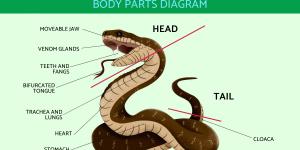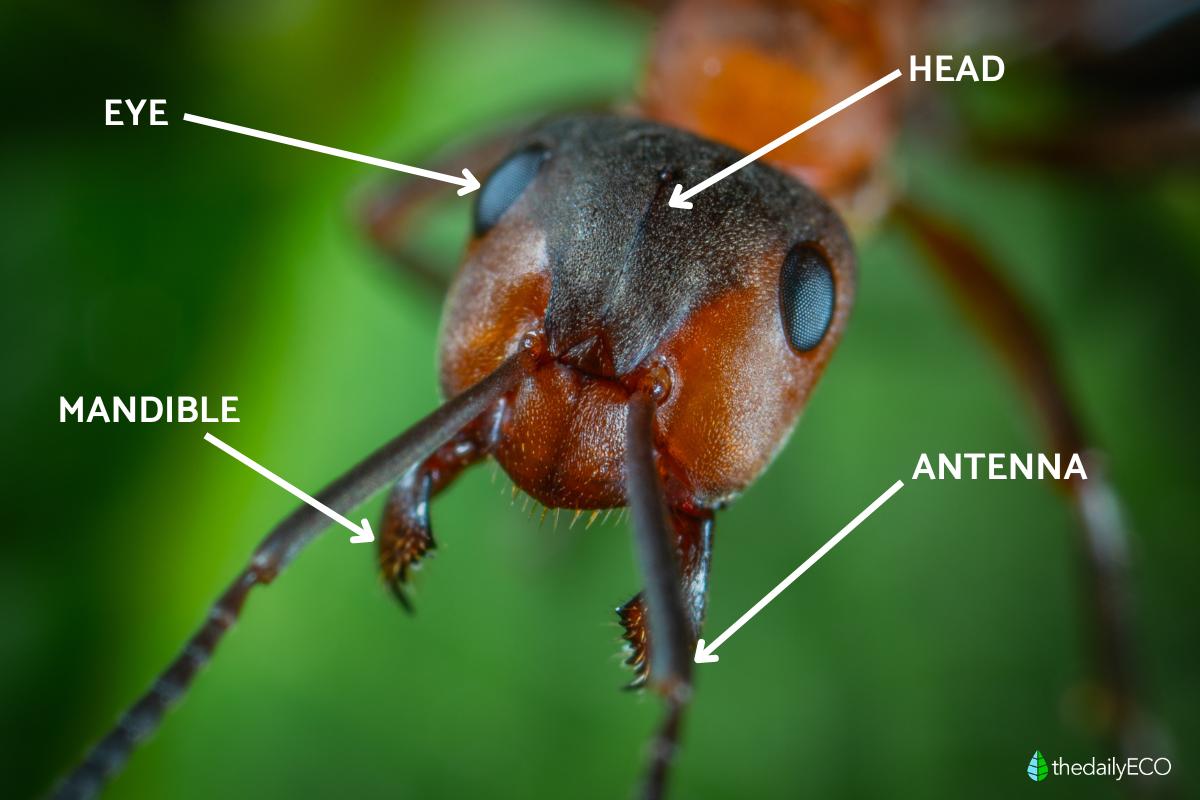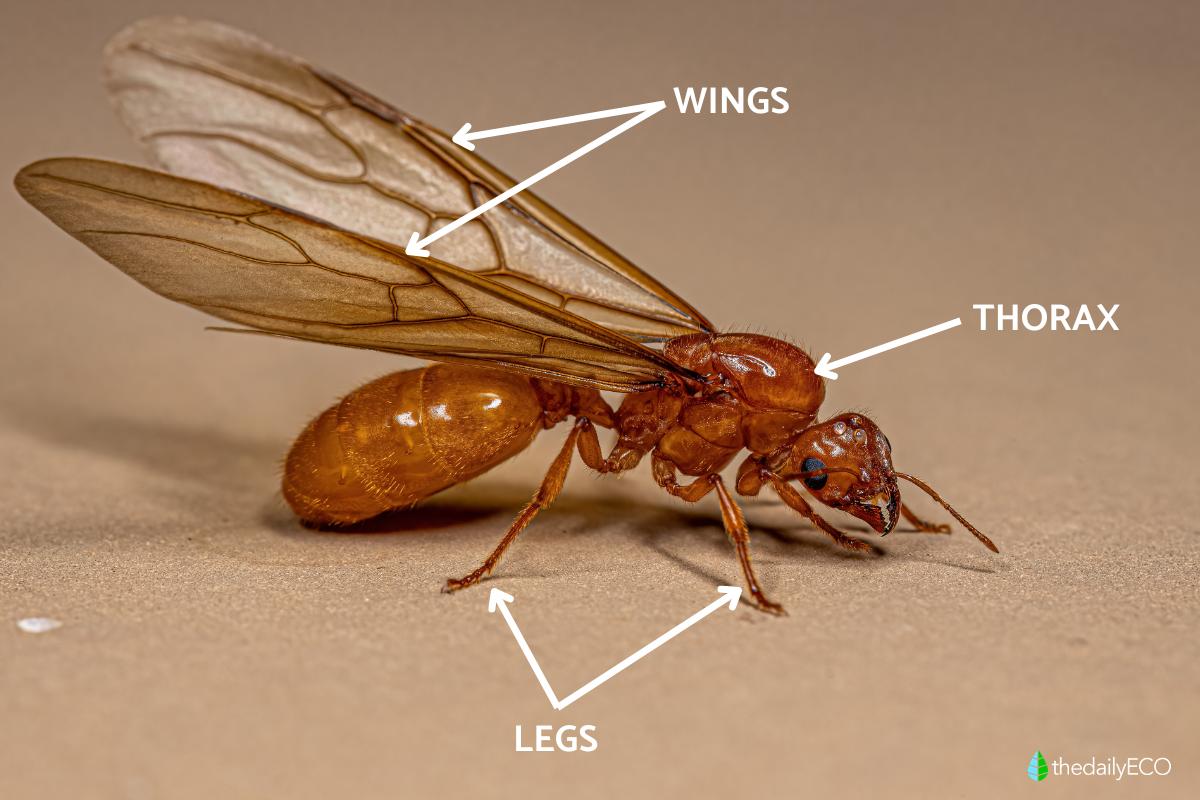Anatomy of an Ant - Ant Body Parts


The anatomy of the ant is structured in such a way as to make them one of the most industrious creatures in nature. Famous for their ability to carry weights much greater than their own, ants have many specialized body parts which allow them to carry out various roles and functions within the ant colony. This anatomy will differ depending on the type of ant, but they all share certain physical traits and morphological features. The body of an ant is split into the head, thorax and abdomen, attached to which are the legs, wings, eyes and other features.
At thedailyECO, we discover more about the anatomy of an ant by providing the various ant body parts. We explain the function and structure of these body parts, as well as provide diagrams to better illustrate ant anatomy.
The head of an ant
We start our description of ant anatomy with the head. This is the ant body part that receives and processes various sensory stimuli from their environment. They do so via various sense organs. In turn, these stimuli are processed in the ant's brain. Although this is the main function of the ant's head, it also has other features which are necessary for survival.
Eyes
The two main eyes of the ant are compound, an anatomical feature unique to arthropods. They are compound because they are made of many individual ommatidia which contain photoreceptor cells and provide the ant's vision. You can see these individual parts in the diagram below.
Compound eyes in ants are characterized by their ability to bring together information from multiple individual lenses to form a single image. The sharpness of the images obtained by ants varies according to species and ant type. For example, species that hunt other animals have excellent eyesight, but those who live underground are almost blind.
In addition to the pair of compound eyes, they have three pairs of superior ocelli, commonly known as the simple eye. These are used to detect variations in light intensity, using only a single lens to do so. These ocelli only present in adult ants.
Antennae
Another characteristic body part of ants is their antennae. The antennae of ants are distinct due to being bent in the middle almost like an elbow, as seen in the diagram below. Ant antennae are divided into two parts:
- Scape: the part closest to the head.
- Funicle: the furthest section that is divided into fragments.
The antennae have a sensory function, being able to detect vibrations, air currents and various substances. The latter include pheromones disolved in the air. They also serve as communication organs. Ants usually meet face to face when they encounter another ant, touching antennae to detect the environment they come from.
Mandibles
The mandibles or jaws of ants are the chewing structures but also serve as an extra pair of hands. They can use them to crush food, cut leaves or to defend themselves from threats. It should be noted that this structure is one of the most important ant body parts. This is because they lack the first pair of legs modified into holding appendages, so they depend largely on the jaws to maneuver and interact with their environment.
In addition, the mandibles have glands that secrete warning pheromones. These serve to alert other ants of possible danger.

The thorax of an ant
We continue the anatomy of an ant by looking at the thorax. This is the middle part of the ant. It is very muscular, since the main function is to support the locomotive limbs that require muscles to move. It is important to note that different types of ants within the colony will have different appendages based on their roles.
Legs
As with all insects, ants have three pairs of legs, i.e. six legs in total. These legs are segmented, which helps them move along the ground. Compared to other insects, ants have modified legs that allow them to run very fast. These legs are anchored to the thorax. Starting from this union, the legs are divided into the following parts:
- Coxa
- Trochanter
- Femur
- Tibia
- Tarsus
- Tarsomeres
- Pretarsus
The pretarsus is a structure that functions like a claw or hook that helps the ant climb vertically. They can even use it to walk upside down, something which shows the strength of its adhesion.
Wings
Ants have very complex social structures. In part, their morphology is determined by the function they have within the colony. This can be seen especially in the wings. In general, no worker ants have wings. Queens and males do because they have to undertake nuptial flights to reproduce. This can vary a little depending on the species of ant. The diagram below shows an adult female queen ant with wings.
Learn about the body parts of another animal with our article on parts of jellyfish anatomy.

The abdomen of an ant
The abdomen of ants is divided into two main segments:
- Pedicel: this is the forepart of the abdomen which connects it to the thorax via the petiole. For this reason, it is often known as the postpetiole. If we compare it to human anatomy, it might be considered the waist.
- Gaster: this is the name often used for the final segments of the ant's abdomen. This is made from various plates known as tergites and sternites which vary according to ant species.
Confusingly, the term ‘metasoma’ is sometimes used for the abdomen. Sometimes it refers to only the gaster, but others include the petiole and postpetiole when they refer to the metasoma.
The petiole is distinct in ants and only a few other insects, such as certain members of Hymenoptera. This is the order which includes different types of bees and wasps. The petiole allows it to have flexibility when moving. Some ant species have stingers on their abdomen, such as fire ants. The petiole gives them better flexibility for attack.
Internal organs
The internal organs housed in the ant's abdomen include the following:
- The crop, stomach and rectal pouch for the digestive system
- The rectum for the excretory system
- The hearts as part of the circulatory system
- The ovipositor as part of the reproductive system
In some ant species it is the modified ovipositor which is used for stinging. Connected to this stinger is Dufour's gland, which in turn connects to the venom gland. The first has the communicative function, while the poison function serves to subdue the prey.
Acidopore
At the most terminal end of an ant's anatomy is a gland called an acidopore where formic acid is released. This serves as a defense, leaving humans with a burning sensation. Ants also use it as an antibacterial to sterilize the food they consume, reducing the establishment of fungi and pathogens. In some cases, the acidopore can retract and become hidden within the ant's abdomen.

If you want to read similar articles to Anatomy of an Ant - Ant Body Parts, we recommend you visit our Facts about animals category.
- Bach Piella, C., Blas Esteban, M., & Blas, M. (1997). Generalities and Development of Arthropods Spain: Fapa Ediciones, S. L.








